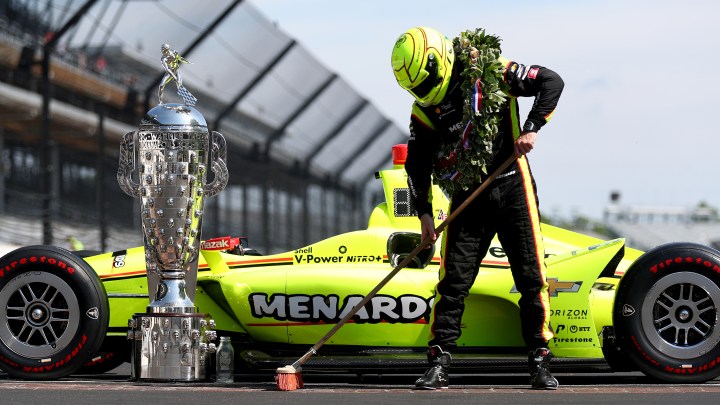
Penske buys Indy 500, hopes to rejuvenate the IndyCar business
Penske buys Indy 500, hopes to rejuvenate the IndyCar business

Businessman Roger Penske, who made his fortune in trucking, recently bought the IndyCar series, which consists of 17 races at different tracks around the U.S and Canada. He also snapped up the Indianapolis Motor Speedway, home to the Indy 500.
IndyCar has a close-knit fan base. Ryan Tierney was born and raised in Indianapolis and went to his first Indy 500 when he was a little kid.
“When you’re 7 years old, and you see and feel and hear the cars going by at 220 miles per hour at the Indianapolis Motor Speedway, that kind of visceral sporting experiences, that sticks with you forever,” he said.
Tierney is in his 40s now and still goes to the Indy 500 every year. There, he watches drivers crammed into single-seat, open-cockpit, open-wheel cars that rev past 7,000 rpm.
When Tierney talks about the sport, he uses “we” and “us.” He said fans are optimistic about Roger Penske’s new role.
“We understand that this is kind of a legacy project for him and for someone as successful as he is to take this on as that kind of a project is kind of exciting for us,” Tierney said. Penske is very into motor sports. His racing team is the most successful in IndyCar history.
At their peak, some IndyCar races drew 100,000 people to the track. Now only the Indy 500 packs the stands and other races are happy to get 30,000.
The TV numbers are relatively low, too, especially compared to a regular season NFL football game.
“You look at the ratings. I mean, it’s not like we’re seeing huge increases. They’re inching along the last few years,” said Andy Baker, director of the motor sports program at Indiana University-Purdue University Indianapolis.
Shrinking TV audiences mean less money from sponsors. Baker said Penske Corp. may stabilize IndyCar, but it’s not going to be easy to revive it.
“I don’t see a lot of growth. I see a very saturated market. A lot of younger people aren’t driving cars, and they’re not changing their oil,” Baker said.
He said that could be a reason they just don’t get the sport. That, or they’re not interested.
But Penske Corp. does have one key asset: the Indianapolis 500 and its iconic racetrack, “The Brickyard.” Penske President Bud Denker said the group plans to update the track. Under previous ownership, he said, the speedway was getting a little long in the tooth.
“They had reached their limit of working capital and needed somebody else to come in with the working capital into and to help. And we can do that,” Denker said.
The Penske Corp. also intends to ramp up marketing of IndyCar races to attract new fans. But Denker said revenue has to come first.
“We need more sponsors in the series. We need more people advertising,” he said. “We want to bring some banks and cellular communication and 5G communication to the racetrack.”
The amount Penske paid for the IndyCar series and the Indianapolis Motor Speedway was not disclosed.
There’s a lot happening in the world. Through it all, Marketplace is here for you.
You rely on Marketplace to break down the world’s events and tell you how it affects you in a fact-based, approachable way. We rely on your financial support to keep making that possible.
Your donation today powers the independent journalism that you rely on. For just $5/month, you can help sustain Marketplace so we can keep reporting on the things that matter to you.












